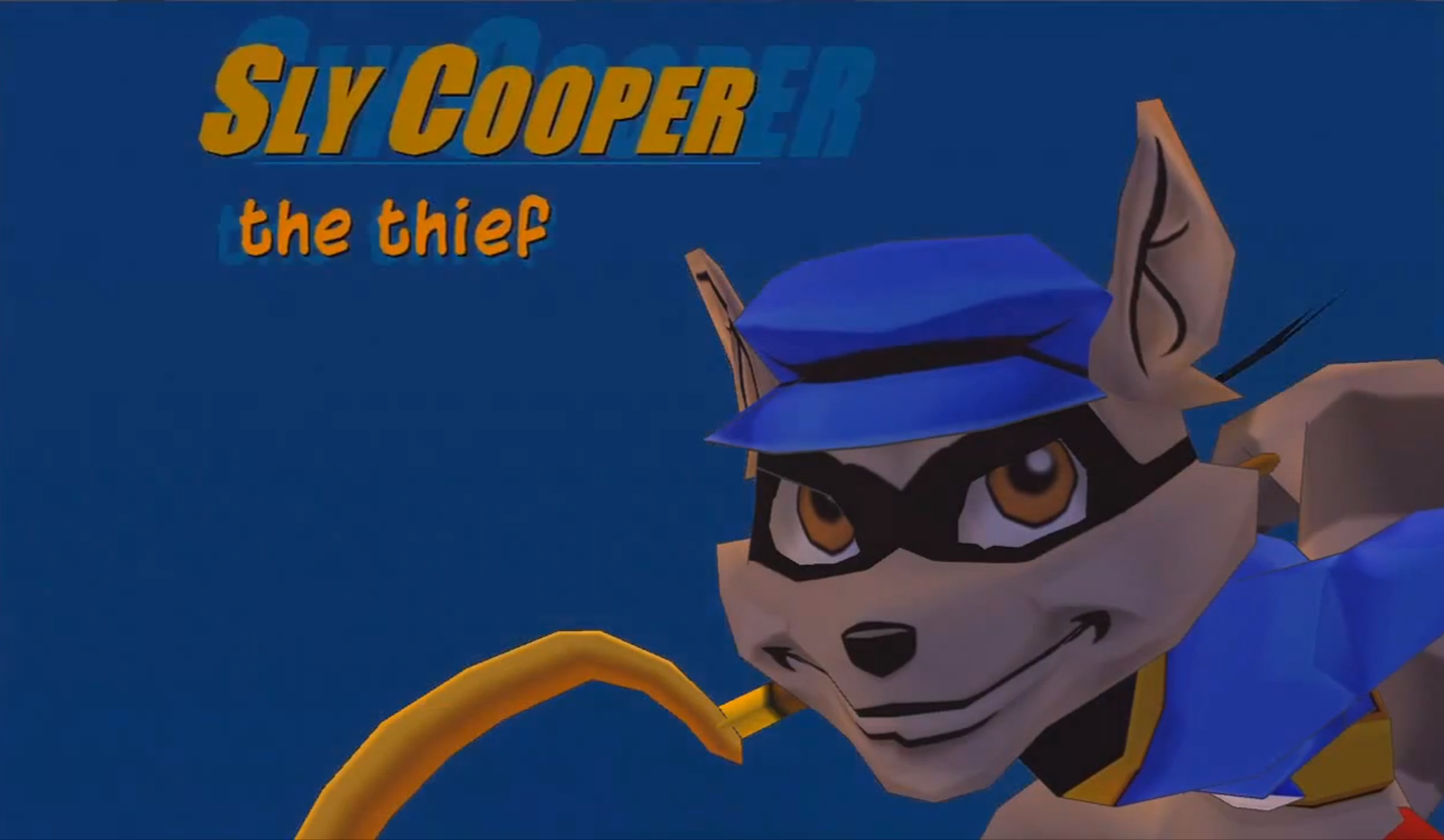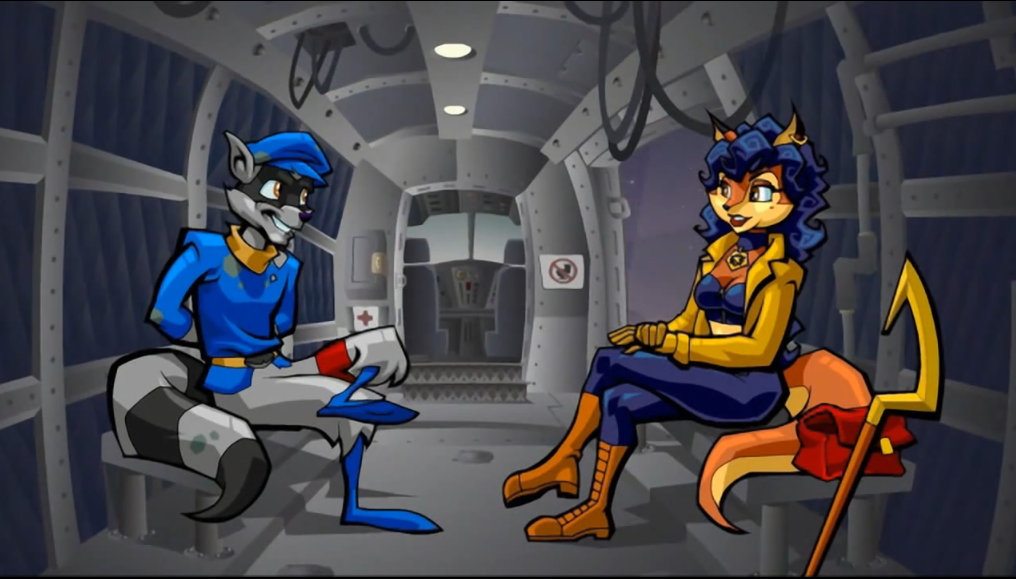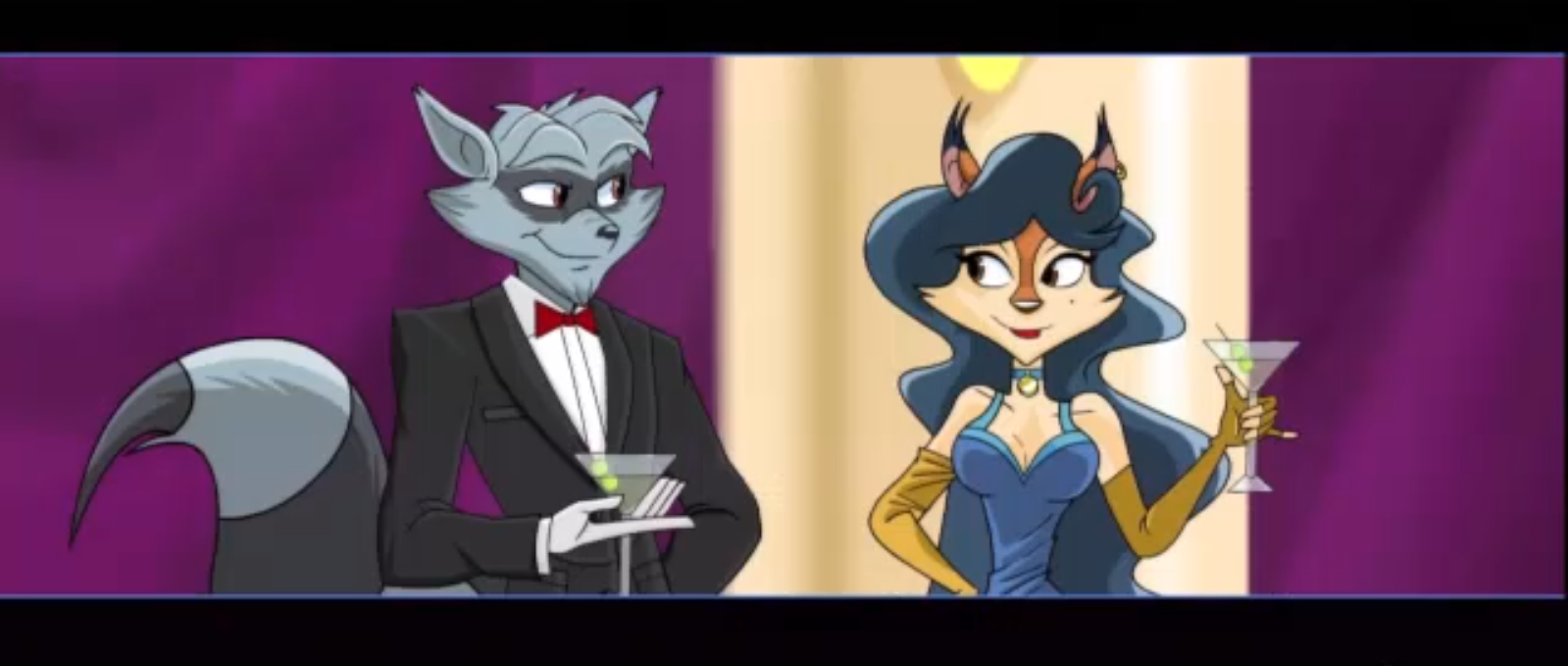The raccoon that stole my heart, or "I had a crush on Sly Cooper"
The year was 2005. Probably. I believe it was Fall, likely mid-October. The specifics do not matter other than that it was a Sunday, which I know because I was hiding from my parents who were attempting to corral our five-piece (and counting) family into the car to head to church. As an uncooperative ten-year-old, I was far more interested in hunkering down in our addition, which held all manner of toy but, most importantly, our TV and video games. I picked up Ratchet & Clank: Up Your Arsenal (2004), my current obsession, and placed the disc in our beloved and well-worn Playstation 2. I couldn’t say why I chose to peruse the game’s manual that day instead of simply pressing start. I often enjoyed flipping through the magnificently large booklets that have since shriveled to paper inserts or nothing at all, but there was nothing about this day in particular that I can recall prompting me to read Up Your Arsenal’s accompanying literature once again. I knew the game by heart, and the manual near as well, so if anything, I was likely just choosing the easier activity to pull myself away from once I was inevitably found out and stuffed in what approximated “proper clothing.”
As it often happens, this small act of exploration and pseudo-rebellion would lead me to discover my most beloved childhood character (emphasis on “beloved”). Hidden at the back of Up Your Arsenal’s manual, right before the requisite dozen or so pages for “notes,” was a footnote highlighting a hidden demo that could be accessed by pressing the shoulder buttons on the main menu. I was not a wealthy child, so the idea of having stumbled upon even just a portion of a new game (especially one that had not been pre-screened by my conservative parents) was electrifying.
My fingers gripped my sweaty DualShock 2 as Ratchet & Clank faded out and a new developer’s logo, Sucker Punch, sprang onto the screen with a suitable amount of bombast. As the camera panned across a museum rooftop, pyramids inexplicably in the background, a trio of silhouetted characters ran into frame. The video cut to a raccoon descending on a rope Spiderman style into the museum, and as he landed his features came into focus and his title card sprang up around him: Sly Cooper, the thief.

It is perhaps difficult to convey now, in a time when the internet allows not only the delivery of a constant stream of demos but also more information than anyone could ever need on any game imaginable, but in our messy addition on this otherwise ordinary Sunday I felt like I had discovered an incredible secret sleeping away on a game I thought I knew top to bottom. I played that demo (which would eventually introduce itself as the opening mission of Sly 2: Band of Thieves (2004)) as often if not more so than I did the game that carried it. Perhaps it was the secrecy of the demo or that I was starved for new games, but I immediately fell hard for this blue raccoon and his gang of misfit, would-be Robin Hoods.
Eventually I scavenged enough money to order the full game, and when the fateful package arrived I went straight not for the game but the manual, one of the largest I had ever seen and designed to resemble the Thievius Raccoonus – the Cooper family’s encyclopedia of thieving activities passed down through generations – featured in the game. I would hold onto that book even after our PS2 eventually broke and we shuffled over to Nintendo’s GameCube for a few years.
If you haven’t played the Sly Cooper games, they follow the titular Sly and his friends, Bentley and Murray, as they embark on heists across the globe to foil the plans of less altruistic burglars (Sly’s rational is that stealing from ordinary people is easy and in poor taste, while stealing from thieves takes finesse). In many ways, Sly 2 was a more lighthearted precursor to the Assassin’s Creed series, albeit on a smaller, PS2 capable scale. But it wasn’t the gameplay that endeared me so heavily to the series, enjoyable as it was, but the colorful characters and their relationships.
I feel it necessary to add a disclaimer at this point to emphasize that my infatuation with Sly Cooper was never of a sexual nature. I did not harbor furry fantasies about this charismatic video game character, and it wasn’t even until years after the fact that I realized my love of the franchise’s mascot was of a romantic nature at all. At the time I was just an isolated preteen feeling for the first time like I had some sort of friend.

Sly Cooper was everything that I – a chubby, shy, speech impeded ten-year-old – was not. He was athletic, charming, a little strong-headed but otherwise incredibly capable at whatever he set out to do. He had friends, a forbidden love interest. The fact that he was a cartoon raccoon hardly registered to my kid brain, but his personality struck a chord I didn’t know I had. His humor was juvenile, but it made me laugh and smile. His status as a professional thief perhaps seemed immoral within my Christian household, but it also carried an air of rebellious intrigued. Here was this person so utterly free and confident, without the shackles of social anxiety and family expectations to smother him. I was utterly taken.
Though I likely wouldn’t have admitted it at the time, I think I saw myself more in Carmelita Fox than Sly himself. A famous globetrotting police officer, Carmelita and Sly shared an on/off romance through the entire series, her duty to her career classing with Sly’s criminal background even as she failed to hide the sparks between them. In the third game, Honor Among Thieves (2005), you were able to play as Carmelita in certain levels and these quickly became some of my favorite moments in an otherwise passable game. I didn’t tremendously enjoy Carmelita’s stuffy third-person shooting, but being able to inhabit her for a few missions was incredibly affirming as a confused boy who couldn’t resolve his feminine tendencies with the masculine expectations placed upon him. With Carmelita, I could be both a law-abiding badass and look great in a crop-top all at once.
When Sly and Carmelita finally got together at the end of the third game it was perhaps the most significant entertainment experience of my younger years. I couldn’t say how conscious I was at the time of how heavily I was projecting myself on these characters, but I knew that kiss meant more to me than just happiness that a series-long tryst finally turned into something real, and that these characters who for all the irony belonged together were happy.

///
I never did replay Honor Among Thieves as much as the prior games, but I always kept it. Somehow it felt odd to revisit something so definitive, to break up Carmelita and Sly just to watch them get back together. This ending felt like the perfect conclusion to my favorite video game franchise, so even though I waited dutifully for nearly a decade for an eventual fourth game, I don’t know that I ever wanted one.
I have tried a few times to get into Thieves in Time (2013), Sly’s next-gen follow up to Sucker Punch’s original trilogy, but I haven’t been able to do it. Something about it being developed by a new developer, Sanzuru Games, rubbed me the wrong way from the outset, and it was abundantly clear from the opening moments that this wasn’t the same Sly that had stolen my heart so many years ago. I don’t doubt that I would enjoy the game if I could disconnect it from my history with the franchise, but that would almost seem to miss the point.
To me, Sly will forever remain on that balcony in Paris, holding Carmelita even as he winked at the camera letting you know he was still the same devilishly charming raccoon as ever, only now on a new path in life. I think that’s what feels so wrong about Thieves in Time. Both Sly and I have gotten older. We’re settling down with our partners and putting up our adolescent fantasies in exchange for something serious and meaningful. Thieves in Time is an attempt to unceremoniously drag Sly and the player back into a lifestyle that neither really wants, and the game never escapes that inherent awkwardness.
I will always have a place in my heart for Sly. He remains one of my favorite video game mascots, perhaps in part because he eventually left us behind. Where Mario and Ratchet will continue adventuring through kingdoms and galaxies until the end of time, Sly’s story is complete. At least, as much as we are meant to be a part of. I like to think he is happily spending his nights dancing with Carmelita as they both laugh about their prior adventures.
I loved Sly not because I wanted to be with him, but because he gave me hope that I too might one day find someone who meant so much to me I would put up my disguise as we chose each other over our own isolated adventures. It was as saccharine a thought as all teenagers are prone to, but it has stuck with me to this day now I’ve found my own real-life Sly (there was never a chance I wasn’t going to be the Carmelita in any relationship). There is a point where we all have to recognize the inherent ridiculousness of crushing on a fictional character (let alone one that is not even the same species as us), but I think it’s worth recognizing that those fuzzy feelings still mean something, even if you’ve yet to find who they ultimately belong to.


